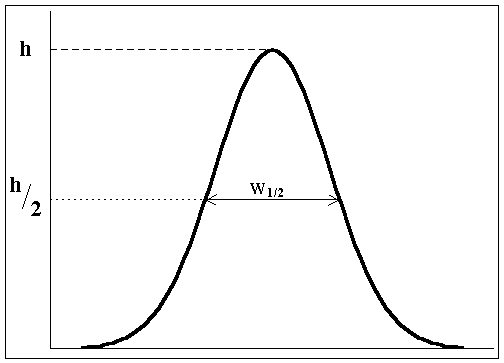

- #PEAK WIDTH FITYK FULL#
- #PEAK WIDTH FITYK PORTABLE#
- #PEAK WIDTH FITYK SOFTWARE#
- #PEAK WIDTH FITYK CODE#
width of peak can be an independent variable, can be the same as width of other peak or can be given by complicated - common for all peaks - formula. that the exact difference between the g width and FWHM of peaks fitted in.
#PEAK WIDTH FITYK SOFTWARE#
It is an easy to handle and non-invasive method. peaks can be arbitrarily binded with each other, eg. hi every time I try to use the software for peak fitting, this error shows up. In-situ Raman spectroscopy facilitates quasi – continuous monitoring of phase transitions. Many of the parameters are the identical to those used in a Rietveld refinement program. Transformation of ACP to crystalline HAP occurred within 18?h, as it is illustrated in a clear peak shift in Raman spectra from 950?cm -1 to 960?cm -1 as well as in a sharpening of the 960?cm -1 peak.

We monitored and assessed the transformation process of ACP to crystalline HAP using highly time-resolved in-situ Raman spectroscopy at 100 spectra per hour, in combination with solution chemistry and XRD data. In this study, we conducted a calcium phosphate precipitation experiment at 20?☌ and pH 9.2, in order to study the temporal evolution of the phosphate mineralogy. The transformation rate is highly dependent on the prevailing physico-chemical conditions, most likely on: Ca & PO 4 concentration, pH and temperature.
#PEAK WIDTH FITYK PORTABLE#
In aqueous solutions ACP transforms rapidly to the crystalline phase. Fityk is a flexible and portable program for nonlinear fitting of analytical functions (especially peak-shaped) to data (usually experimental data). Peaks=np.delete(peaks, np.Amorphous calcium phosphate (Ca 3(PO 4) 2xnH 2O n?=?3–4.5 ACP) is a precursor phase of the mineral hydroxyapatite (Ca 5(PO 4) 3(OH) HAP) that in natural settings occurs during both authigenic and biogenic mineral formation. #,w,f = get_height_width_floro2(maxtab,mintab,y) parameters of peaks can be arbitrarily bound to each other, eg. This piece of software is not required for peak fitting and Fityk is in no way recommended above any. In other words, for nonlinear peak separation and analysis. W,f = get_height_width_floro(peaks,peak_height,y) Histogram Mean, 36.6629, Pore Area SD, 7382.116. Peak_width=peak_widths(y,peaks,rel_height=1) This function calculates the width of a peak in samples at a relative distance to the peak’s height and prominence. Calculate the width of each peak in a signal. Prominence_data=peak_prominences(y,peaks,wlen=15) (x, peaks, relheight0.5, prominencedataNone, wlenNone) source. Prominences = peak_prominences(y,peaks,wlen=15) peaks,peak_height = find_peaks(y,wlen=15,plateau_size=(0,2),distance=5)
#PEAK WIDTH FITYK CODE#
Here there are peaks with very small peak height, which I want to excludeīelow code is a part of my original script that I am using for finding peak and it's properties.

I have tried using variable parameters but it didn't turn up to be as good as desired. I understand prominences or thresholds can be set but I want it to be a good variable. height in a given signal, so that some small peaks get excluded. Another picture to show the same problem.Īnother thing is I want to give some minimum height for a peak but which is variable and depends on signal or a peak with max.

#PEAK WIDTH FITYK FULL#
For our purposes, the full curve-fitting abilities of fityk are a. if the bases are not good, height(which is prominence) won't be correct either. an independent variable, the same as the width of another peak, or can be given by complex (and general for all peaks) formula. You probably didnt gain anything from graphing the peak barking periods of your. But you can see for few peaks the bases are not good. Here I have marked peaks in green color and estimated right and left bases (these are left and right index of width) in red. But there are signals with overlapped peaks, for whom /peakwidth is not finding correct bases of peaks, thus wrongly estimating width and height of few peaks. The result of the best xerogel peak shows at calcination of 450C with peak area. I am interested in calculating the width and height of peaks in different signals. The deconvolution of FTIR spectra calculated using the Fityk software.


 0 kommentar(er)
0 kommentar(er)
